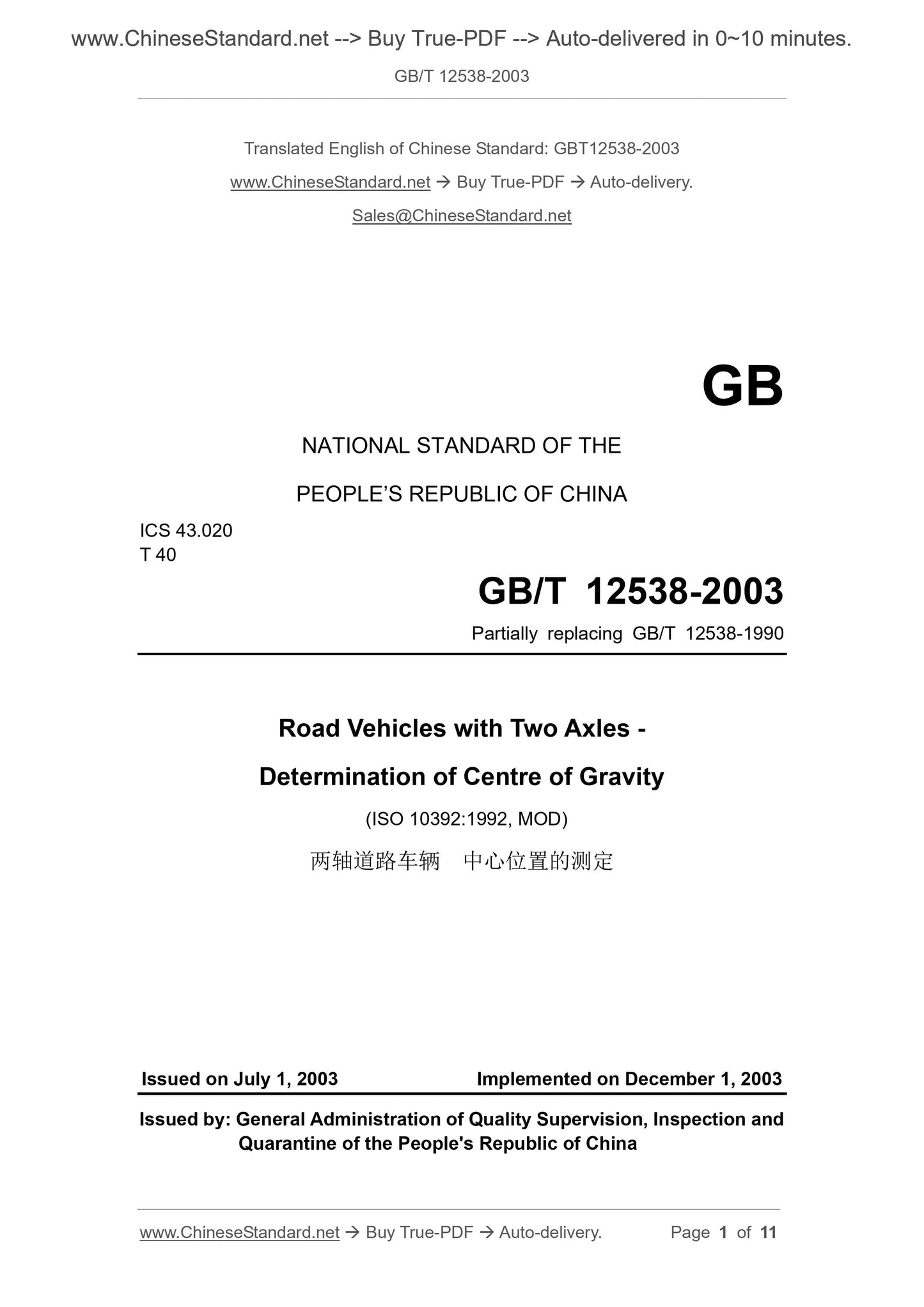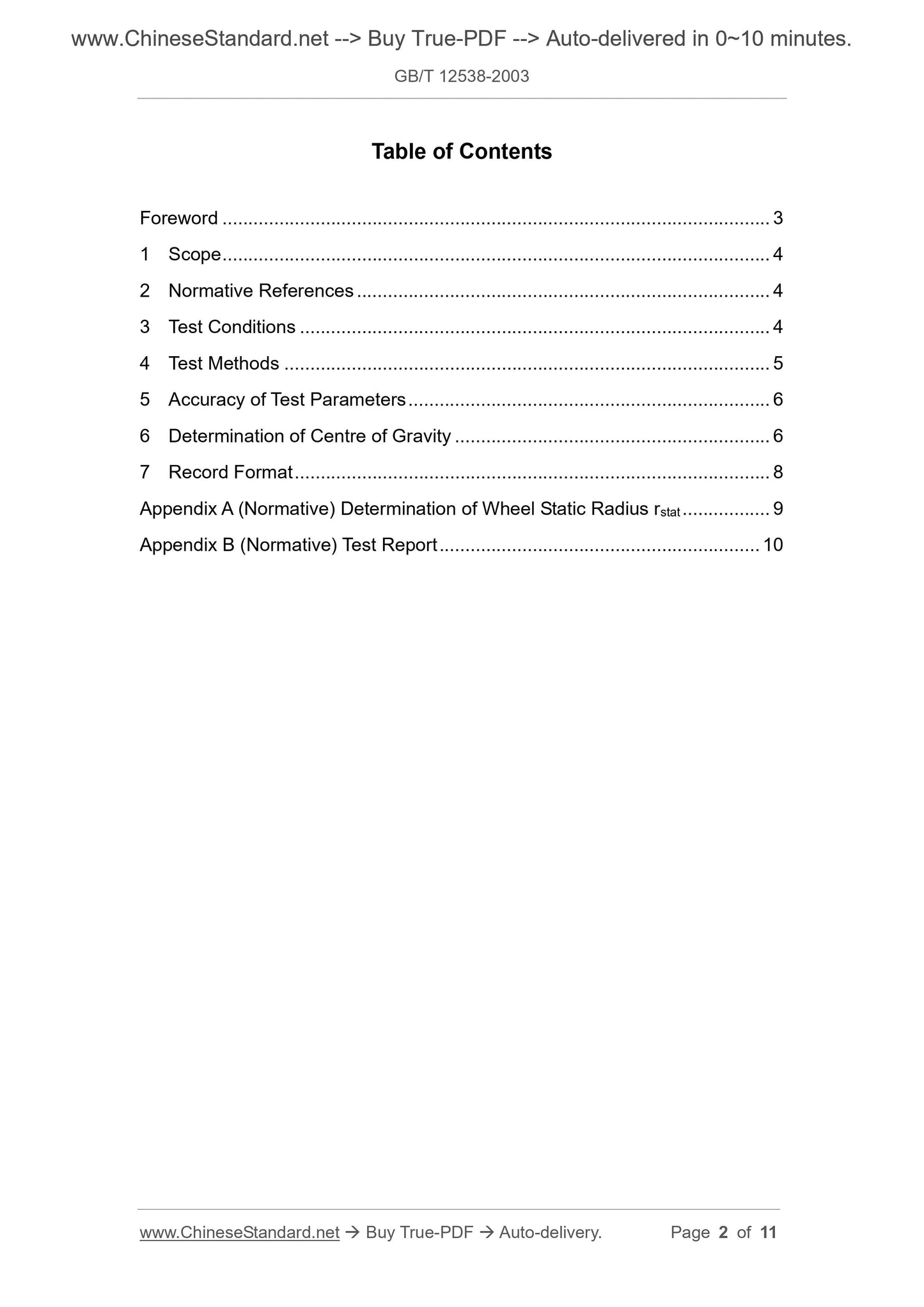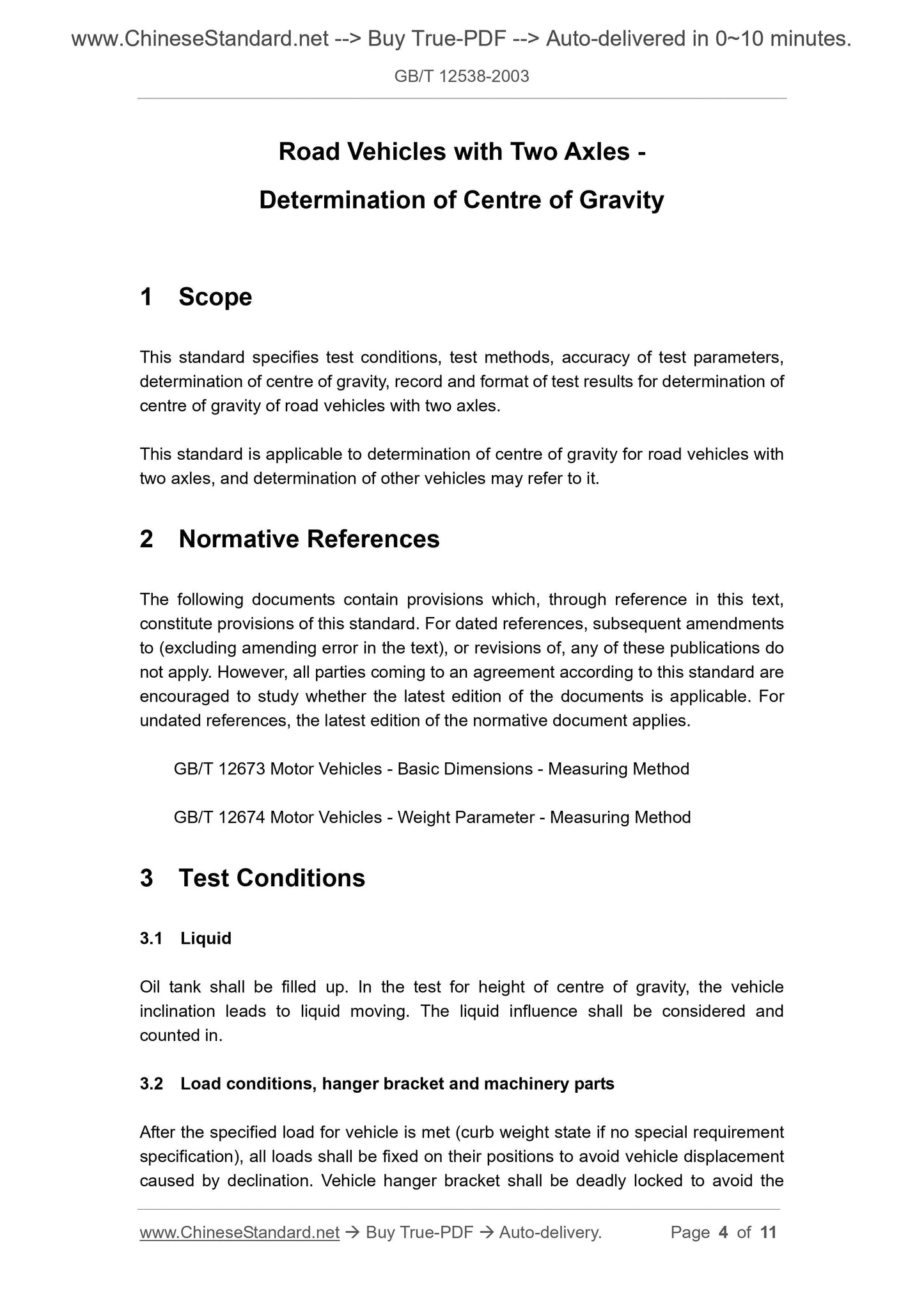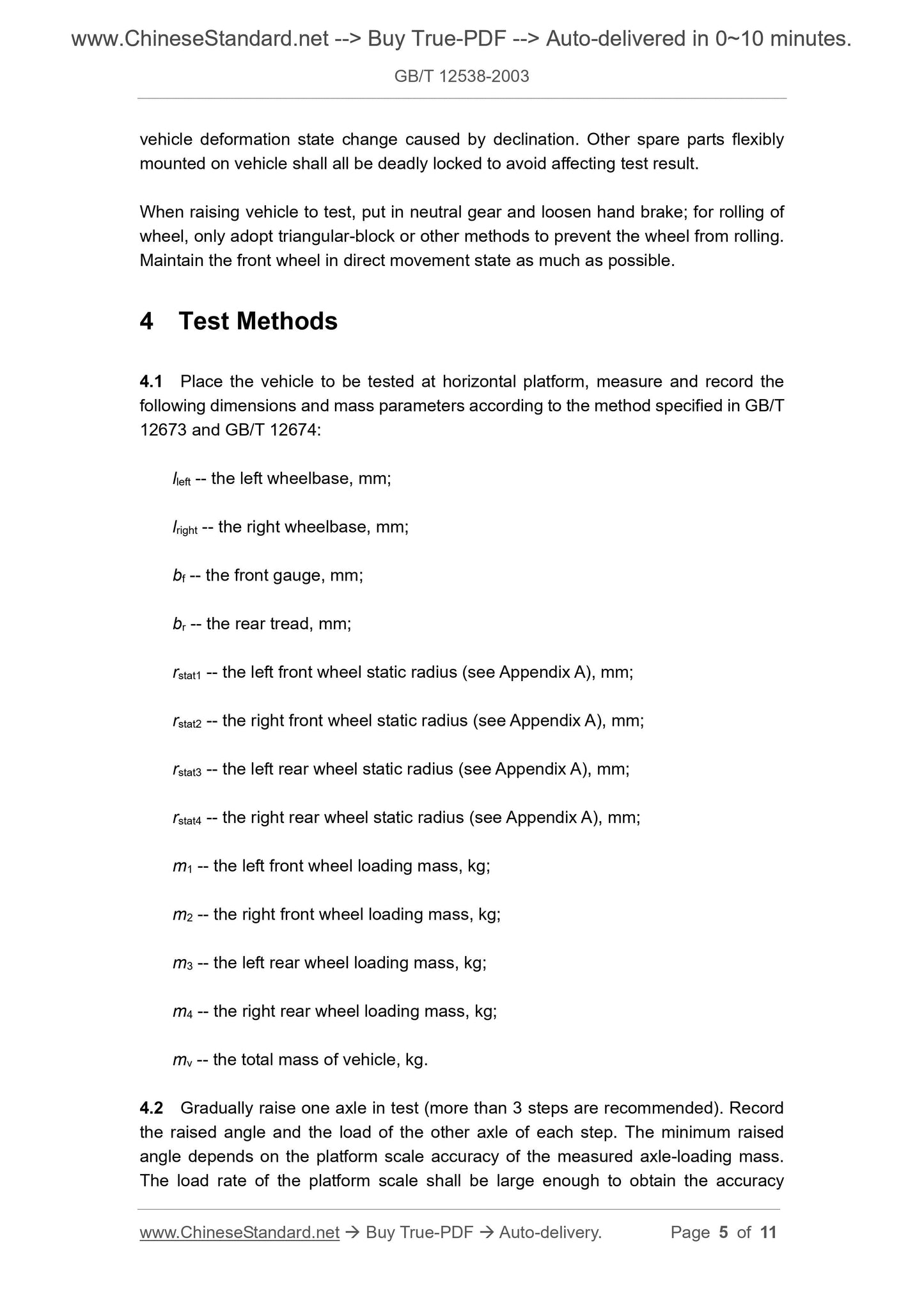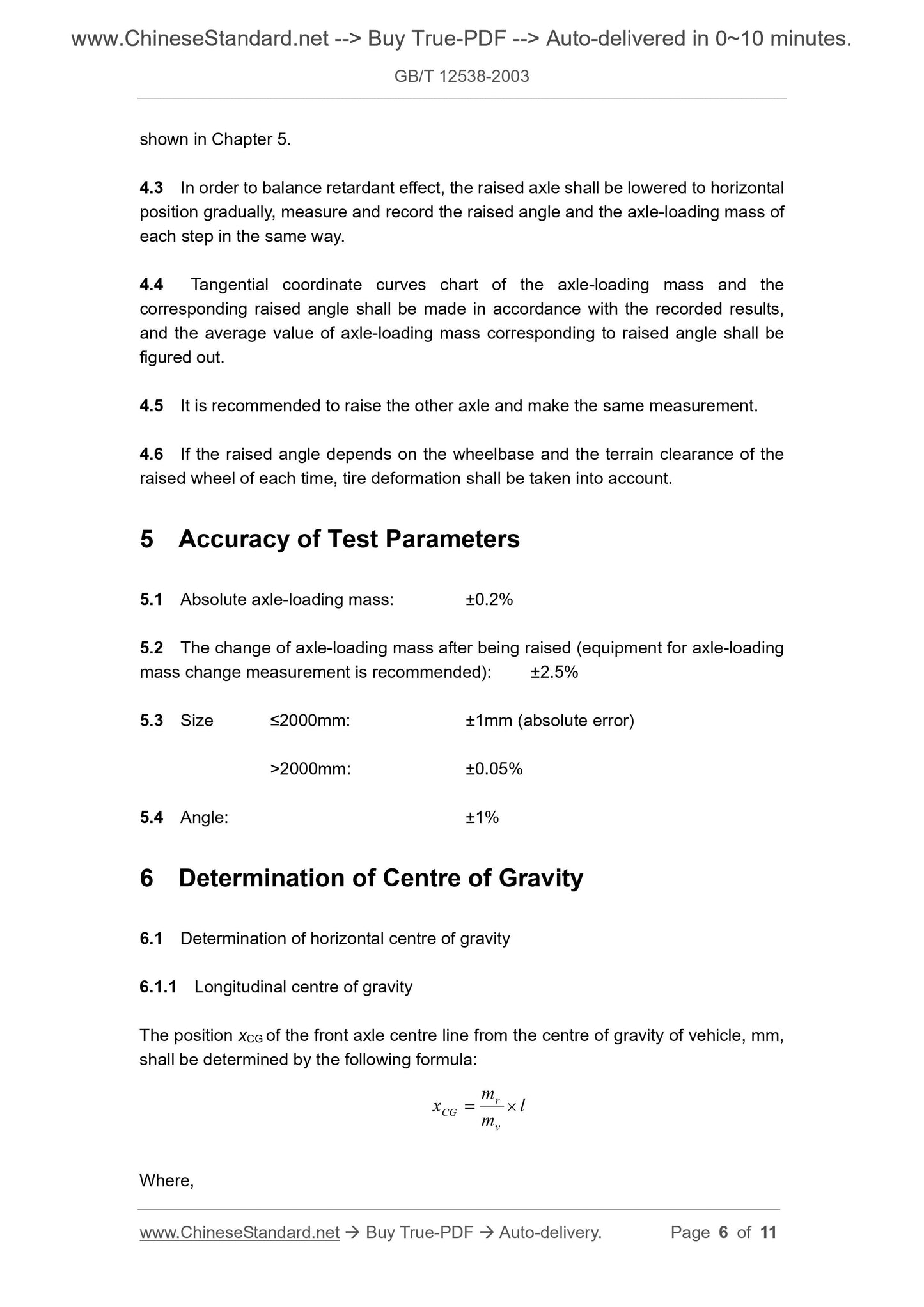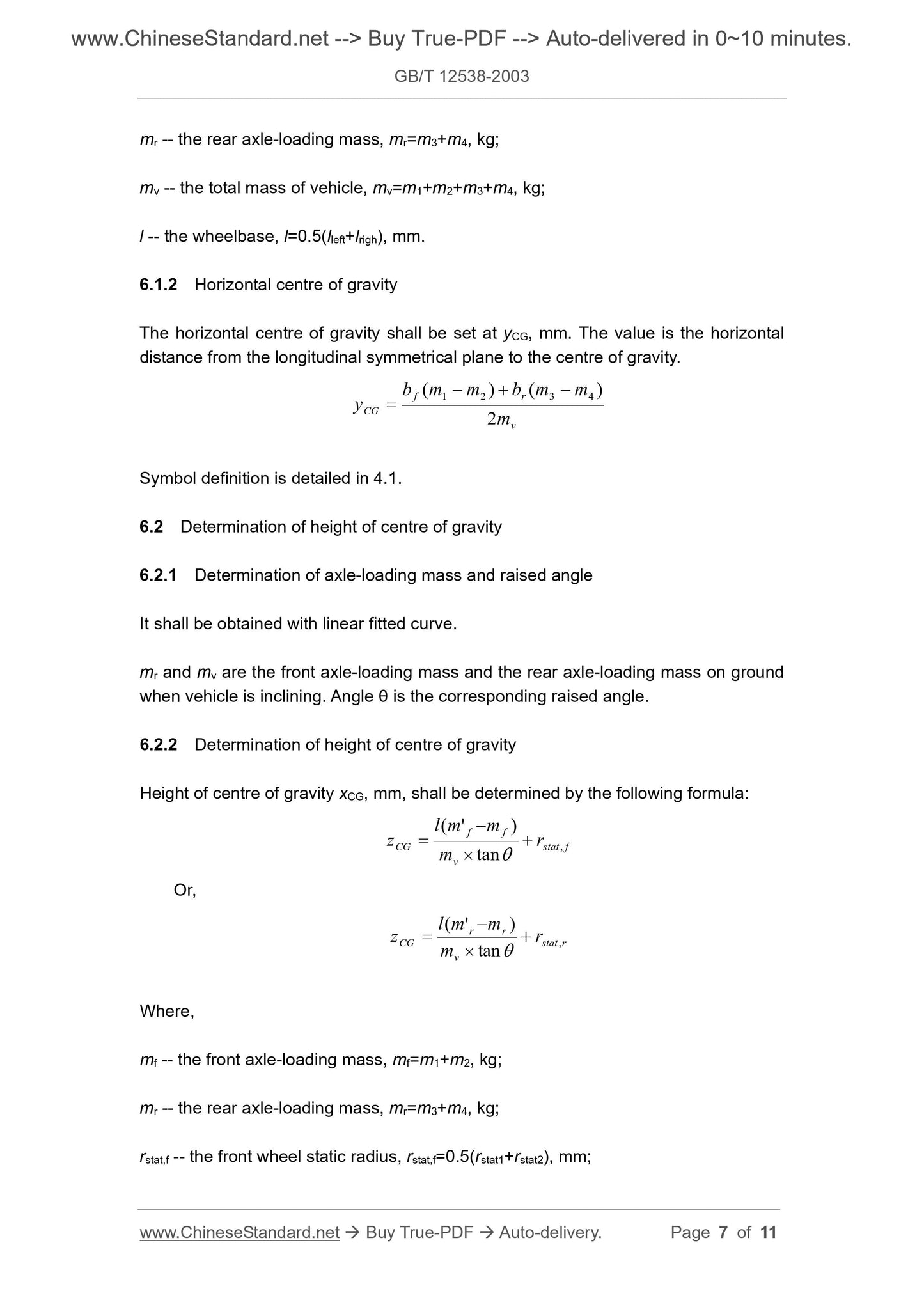1
/
of
6
PayPal, credit cards. Download editable-PDF and invoice in 1 second!
GB/T 12538-2003 English PDF (GB/T12538-2003)
GB/T 12538-2003 English PDF (GB/T12538-2003)
Regular price
$70.00
Regular price
Sale price
$70.00
Unit price
/
per
Shipping calculated at checkout.
Couldn't load pickup availability
GB/T 12538-2003: Road vehicles with two axles -- Determination of centre of gravity
Delivery: 9 seconds. Download (and Email) true-PDF + Invoice.Get Quotation: Click GB/T 12538-2003 (Self-service in 1-minute)
Newer / historical versions: GB/T 12538-2003
Preview True-PDF
Scope
This standard specifies test conditions, test methods, accuracy of test parameters,determination of centre of gravity, record and format of test results for determination of
centre of gravity of road vehicles with two axles.
This standard is applicable to determination of centre of gravity for road vehicles with
two axles, and determination of other vehicles may refer to it.
Basic Data
| Standard ID | GB/T 12538-2003 (GB/T12538-2003) |
| Description (Translated English) | Road vehicles with two axles. Determination of centre of gravity |
| Sector / Industry | National Standard (Recommended) |
| Classification of Chinese Standard | T40 |
| Classification of International Standard | 43.020 |
| Word Count Estimation | 9,982 |
| Date of Issue | 2003-07-01 |
| Date of Implementation | 2003-12-01 |
| Older Standard (superseded by this standard) | GB/T 12538-1990 |
| Adopted Standard | ISO 10392-1992; MOD |
| Issuing agency(ies) | General Administration of Quality Supervision, Inspection and Quarantine of the People Republic of China |
| Summary | This standard specifies: two -axis road vehicle center of gravity position measurement test conditions, test methods, test parameters precision, gravity position to identify and test results Record and formats. This standard applies to: two -axis road vehicles center of gravity position determination. Other vehicles for implementation. |
Share
